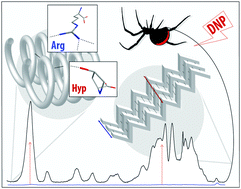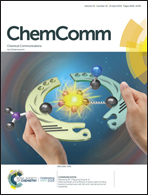DNP NMR spectroscopy reveals new structures, residues and interactions in wild spider silks†
Abstract
DNP solid state NMR spectroscopy allows non-targeted analysis of wild spider silk in unprecedented detail at natural abundance, revealing hitherto unreported features across several species. A >50-fold signal enhancement for each silk, enables the detection of novel H-bonding networks and arginine conformations, and the post-translational modified amino acid, hydroxyproline.



 Please wait while we load your content...
Please wait while we load your content...